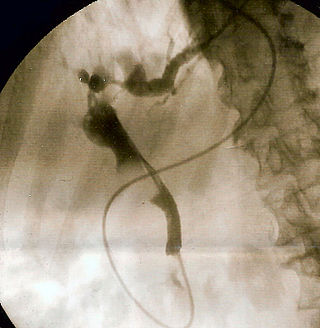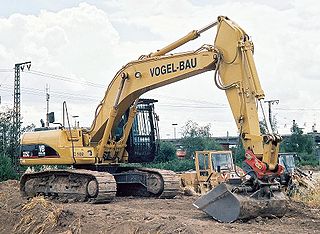Notes
- ↑ [2003] Q.B. 443, 451
| Core subjects | ||
|---|---|---|
| Further subjects | ||
| Related systems | ||
| Gwilliam v West Hertfordshire Hospital NHS | |
|---|---|
| Decided | 24 July 2002 |
| Citation(s) | [2002] EWCA Civ 1041; [2003] Q.B. 443 |
| Court membership | |
| Judge(s) sitting | Lord Woolf CJ, Waller and Sedley LJJ |
Gwilliam v West Hertfordshire Hospital NHS [2002] EWCA Civ 1041; [2003] Q.B. 443 is an English tort law case concerning occupiers' liability under the Occupiers' Liability Act 1957. It also raises the question of whether the duty of care should encompass a duty to enquire into the insurance status of contractors for dangerous activities.
Ethel Gwilliam, age 63, went to an NHS organised fun fair, at Mount Vernon Hospital in Northwood, Middlesex, where there was a "splat wall". Waller LJ in his account of the facts described it as follows. "The aim of the apparatus was to allow the participant to bounce from a trampoline and adhere by means of Velcro material to a wall." [1] In other words, you get dressed in a velcro costume, bounce on the trampoline and then go "splat" onto the wall. Unfortunately, Ms Gwilliam was injured, because the splat wall had been set up negligently. The hospital had got the splat wall through an independent contractor called "Club Entertainment" by looking them up in the phone book. It turned out that the contractor's public liability insurance had expired just a few days before the event.
Ms Gwilliam had settled a claim against the contractor for £5000 compensation for her injuries. This figure reflected the fact that the contractor was probably not in a position to pay much more. She then sued the NHS trust for the difference between that sum and the full compensation that she could have got, on the basis that they did not provide a safe environment for her as a visitor, and that they failed properly to enquire into the contractor's insurance status.
Lord Woolf MR and Waller LJ both held that under s.2(2) of the Occupiers' Liability Act 1957, the Hospital did owe a duty of care to the claimant (Sedley LJ dissenting as to whether a duty was owed). The question was whether the hospital had discharged this duty, (s2(4)(b) of the '57 Act could not be directly applied on the facts), and it was held that this included establishing that the independent contractor was competent for the context of a fair in the hospital grounds. The nature of the event demanded that the insurance be checked as part of exercising that duty and Mr Wynne for the hospital had indeed asked whether there was insurance at the time of booking (which there was), but unbeknown to the hospital, this insurance lapsed a few days before the fair and it was held that it would have been "an unreasonable requirement" for Mr Wynne to have insisted on checking the policy document. As such, the hospital had discharged its duty and the appeal was dismissed.
Sedley LJ concurred in the result of the case (that the Trust was liable) but dissented on the obiter statements concerning insurance. He said that if there was a duty of care, it would be a logical and factual leap to include inquiry into insurance into the duty of care. That would not be fair, just and reasonable.
In tort law, a duty of care is a legal obligation that is imposed on an individual, requiring adherence to a standard of reasonable care to avoid careless acts that could foreseeably harm others, and lead to claim in negligence. It is the first element that must be established to proceed with an action in negligence. The claimant must be able to show a duty of care imposed by law that the defendant has breached. In turn, breaching a duty may subject an individual to liability. The duty of care may be imposed by operation of law between individuals who have no current direct relationship but eventually become related in some manner, as defined by common law.

English tort law concerns the compensation for harm to people's rights to health and safety, a clean environment, property, their economic interests, or their reputations. A "tort" is a wrong in civil, rather than criminal law, that usually requires a payment of money to make up for damage that is caused. Alongside contracts and unjust enrichment, tort law is usually seen as forming one of the three main pillars of the law of obligations.
Public liability is part of the law of tort which focuses on civil wrongs. An applicant usually sues the respondent under common law based on negligence and/or damages. Claims are usually successful when it can be shown that the owner/occupier was responsible for an injury, therefore they breached their duty of care.
Re D’Jan of London Ltd [1994] 1 BCLC 561 is a leading English company law case, concerning a director's duty of care and skill, whose main precedent is now codified under s 174 of the Companies Act 2006. The case was decided under the older Companies Act 1985.
Bristol and West Building Society v Mothew [1996] EWCA Civ 533 is a leading English fiduciary law and professional negligence case, concerning a solicitor's duty of care and skill, and the nature of fiduciary duties. The case is globally cited for its definition of a fiduciary and the circumstances in which a fiduciary relationship arises.
Roles v. Nathan [1963] 1 W.L.R. 1117, [1963] 2 All E.R. 908 is an occupiers' liability case in English tort law. It concerns s.2(3)(b) of the Occupiers' Liability Act 1957, which states,
"An occupier may expect that a person, in the exercise of his calling, will appreciate and guard against special risks ordinarily incident to it, so far as the occupier leaves him free to do so."

The Occupiers' Liability Act 1957 is an Act of the Parliament of the United Kingdom that covers occupiers' liability. The result of the Third Report of the Law Reform Committee, the Act was introduced to Parliament as the Occupiers' Liability Bill and granted the Royal Assent on 6 June 1957, coming into force on 1 January 1958. The Act unified several classes of visitors to property and the duty of care owed to them by the occupier, as well as codifying elements of the common law relating to this duty of care. It also covered the duty owed to parties to a contract entering the property and ways of excluding the liability for visitors. The Act introduced an element of liability for landlords who failed to maintain their properties and were as a result responsible for the injury of a non-tenant, something counter to the previous common law rule in English law. The Act is still valid law, and forms much of the law relating to occupiers' liability in English law along with the Occupiers' Liability Act 1984.
Occupiers' liability is a field of tort law, codified in statute, which concerns the duty of care owed by those who occupy real property, through ownership or lease, to people who visit or trespass. It deals with liability that may arise from accidents caused by the defective or dangerous condition of the premises. In English law, occupiers' liability towards visitors is regulated in the Occupiers' Liability Act 1957. In addition, occupiers' liability to trespassers is provided under the Occupiers' Liability Act 1984. Although the law largely codified the earlier common law, the difference between a "visitor" and a "trespasser", and the definition of an "occupier" continue to rely on cases for their meaning.

Nettleship v Weston [1971] 2 QB 691 is an English Court of Appeal judgment dealing with the breach of duty in negligence claims. In this case the court had considered the question of the standard of care that should be applied to a learner driver, and whether it should be the same as is expected of an experienced driver.

In Plus Group Ltd v Pyke[2002] EWCA Civ 370 is a UK company law case concerning the fiduciary duties of directors, and in particular the doctrine concerning corporate opportunities. In the course of his appellate judgment, Lord Justice Sedley, sitting with Lord Justice Brooke and Lord Justice Jonathan Parker, cast doubt on the correctness of the contract law case, Bell v. Lever Bros
Wheat v E Lacon & Co Ltd [1966] 1 All ER 582 is a decision of the House of Lords concerning the definition of "occupier" for the purposes of Occupiers' Liability Act 1957. The leading speech in the case was delivered by Lord Denning, during his short tenure as a Law lord.

Tomlinson v Congleton Borough Council [2003] UKHL 47 is a 2003 court case in England from the House of Lords regarding the torts of negligence and occupiers' liability.
Donoghue v Folkestone Properties Limited (2003) is an English court case heard in the Court of Appeal of England and Wales concerning the tort of occupiers' liability from the Occupiers' Liability Act 1984.

Bailey v Ministry of Defence [2008] EWCA Civ 883 is an English tort law case. It concerns the problematic question of factual causation, and the interplay of the "but for" test and its relaxation through a "material contribution" test.

Gregg v Scott [2005] UKHL 2 is an English tort law case, on the issue of loss of a chance, in causation. It affirms the principle of Hotson v East Berkshire Area Health Authority, on a narrow margin of 3 to 2. Lord Nicholls' dissent is of particular note, in arguing that loss of a chance should be actionable.
Vicarious liability in English law is a doctrine of English tort law that imposes strict liability on employers for the wrongdoings of their employees. Generally, an employer will be held liable for any tort committed while an employee is conducting their duties. This liability has expanded in recent years following the decision in Lister v Hesley Hall Ltd to better cover intentional torts, such as sexual assault and deceit. Historically, it was held that most intentional wrongdoings were not in the course of ordinary employment, but recent case law suggests that where an action is closely connected with an employee's duties, an employer can be found vicariously liable. The leading case is now the Supreme Court decision in Catholic Child Welfare Society v Institute of the Brothers of the Christian Schools, which emphasised the concept of "enterprise risk".

Phillips Products Ltd v Hyland and Hamstead Plant Hire Co Ltd [1984] EWCA Civ 5 is an English contract law case concerning the Unfair Contract Terms Act 1977.

Dutton v Bognor Regis Urban District Council [1972] 1 QB 373 is an English contract law and English tort law case concerning defective premises and the limits of contract damages. It was disapproved by the House of Lords in Murphy v Brentwood DC and is now bad law except in Canada and New Zealand.

Chandler v Cape plc [2012] EWCA Civ 525 is a decision of the Court of Appeal which addresses the availability of damages for a tort victim from a parent company, in circumstances where the victim suffered industrial injury during employment by a subsidiary company.

Medical malpractice is a legal cause of action that occurs when a medical or health care professional, through a negligent act or omission, deviates from standards in their profession, thereby causing injury or death to a patient. The negligence might arise from errors in diagnosis, treatment, aftercare or health management.